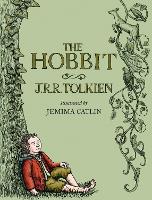Beren and LuthienAuthor :
Paperback
Published : Thursday 1 June 2017
You may also like ...

by
Hardback
12 Sep 2013
>>
€29.40

by
Paperback
01 Aug 2013
FANTASY
€11.75
Description
Painstakingly restored from Tolkien's manuscripts and presented for the first time as a fully continuous and standalone story, the epic tale of Beren and Luthien will reunite fans of The Hobbit and The Lord of the Rings with Elves and Men, Dwarves and Orcs and the rich landscape and creatures unique to Tolkien's Middle-earth.
Painstakingly restored from Tolkien's manuscripts and presented for the first time as a fully continuous and standalone story, the epic tale of Beren and Luthien will reunite fans of The Hobbit and The Lord of the Rings with Elves and Men, Dwarves and Orcs and the rich landscape and creatures unique to Tolkien's Middle-earth. Beren was a mortal man, but Luthien was an immortal Elf. Her father, a great Elvish lord, was deeply opposed to Beren, and imposed on him an impossible task that he must perform before he might wed Luthien. Undaunted by Lord Thingol's challenge, Beren and Luthien embark on the supremely heroic attempt to rob Morgoth, the greatest of all evil beings, of a Silmaril, one of the hallowed jewels that adorn the Black Enemy's crown. The tale of Beren and Luthien, which was written shortly after J.R.R. Tolkien returned from the Battle of the Somme in 1916, was an essential element in the evolution of The Silmarillion. In this book Christopher Tolkien has extracted the various versions of Beren and Luthien from the comprehensive work in which they are embedded. To show something of the process whereby this Great Tale of Middle-earth evolved over the years, he tells the story in his father's own words by giving, first, its original form, and then passages in prose and verse from later texts that illustrate the narrative as it changed. Presented together for the first time, they reveal aspects of the story, both in event and in narrative immediacy, that were afterwards lost.
Reviews